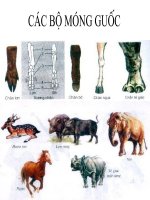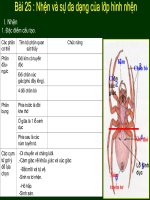Tải Giáo án tiếng Anh lớp 9 Tuần 4 sách mới - Giáo án điện tử môn tiếng Anh 9 theo tuần
Bạn đang xem bản rút gọn của tài liệu. Xem và tải ngay bản đầy đủ của tài liệu tại đây (95.46 KB, 6 trang )
<span class='text_page_counter'>(1)</span><div class='page_container' data-page=1>
<b>GIÁO ÁN TIẾNG ANH LỚP 9 </b>
<b> TUẦN 4</b>
<b>NĂM HỌC 2019 - 2020</b>
Period: 10 Week: 4
<b>Unit 2: CITY LIFE</b>
<i><b>Lesson 2 – A CLOSER LOOK 1</b></i>
<b>I. OBJECTIVES: By the end of this Unit, students will be able to: use</b>
adjectives, and comparison of adjectives and adverbs correctly, use common
phrasal verbs correctly and appropriately
<b>II . PREPARATION: sub -board, pictures, cassette </b>
<b>III. PROCEDURES: </b>
<b>Teacher’s and students’ activities</b> <b>Content</b>
<b>Activity 1: </b>
1a./ Have Ss read through the letter so that they
can understand the general idea. Ask them what
the
purpose of the letter is (Jack is writing the letter to
Oggy to tell about his trip to Hoi An). Have Ss read
the adjectives in the box and quickly elicit the
meaning of each adjective. If Ss do not know any of
them, quickly give the meaning. Ss work in pairs to
do the task. Have some Ss read their answers.
Correct their pronunciation if needed and confirm
the correct answers.
b./ Ask Ss read the letter again and underline all the
other adjectives. Have them give the meanings of
these adjectives in the context of the letter. Correct
their answers.
<b>Activity 2:</b>
2 Have Ss read through the given adjectives. Have
some Ss read aloud all the adjectives to make sure
they pronounce the adjectives correctly. Ask them
Key:
1. ancient/historic 2. warm 3.
comfortable 4.helpful
5.fascinating 6.historic/ancient
7.local 8.delicious
</div>
<span class='text_page_counter'>(2)</span><div class='page_container' data-page=2>
which adjectives they know. Quickly teach Ss the
adjectives
they do not know.
Ss work in groups and discuss which adjectives
describe, or are related to, city life. Encourage them
to talk about their choice.
<b>Activity3:</b> Ss work individually, then compare their
answers with a partner’s. Ask some Ss to write their
answers on the board. Check their answers as a
class.
<b>Activity 4: </b>T plays the recording and Ss repeat.
Play the recording as many times as necessary.
Correct their pronunciation, especially the stressed
words. Have them circle the stressed pronouns
<b>Activity 5a.</b>
Play the recording. Ss listen and mark the
underlined words as W (weak) or S (strong).
Elicit their answers and correct their mistakes.
For a stronger class, before playing the recording,
have Ss read the exchanges and mark the underlined
words as W (weak) or S (strong). Ask some Ss to
Key:
1.fashionable 2. annoying
3.forbidden
4.cosmopolitan 5.modern
6.polluted
Key:
1. A: Can you come and give me a
hand? (me is weak)
B: OK. Wait for me! (me is strong)
2. A: Did you come to the party last
night? (you is weak)
B: Yes. But I didn’t see you. (you
is strong)
3. A: Look - it’s him! (him is
strong)
B: Where? I can’t see him. (him is
weak)
4. A: They told usto go this way. (us
is weak)
B: Well, they didn’t tell us! (us is
strong)
key:
1. A: Is he (W) there?
B: No. Everybody else is, but
he’s(S) gone home!
2. A: Do you know that woman?
B: Her (S)? Er… No. I don’t
recognise her(W).
</div>
<span class='text_page_counter'>(3)</span><div class='page_container' data-page=3>
give the answers and quickly write them on the
board.
Now play the recording for Ss to check their
answers.
<b>Activity 5b.</b>
Ss work in pairs to practise the exchanges above. Go
around and give support if necessary
any longer.
B: What do you mean ‘we’(S)? I’ve
(S) got plenty of time.
4. A: Look! Everybody’s leaving.
B: What about us(S)? Shall we(W)
go, too?
<b>IV- HOMEWORK:</b>
-Write new words then learn them by heart.
-Copy the exercise into notebooks.
-Prepare <b>A CLOSER LOOK 2</b>
Period: 11 Week: 4
<b>Unit 2: CITY LIFE</b>
<i><b>Lesson 3 - A CLOSER LOOK 2</b></i>
<b>I. OBJECTIVES: By the end of this Unit, students will be able to:</b>
read for specific information about the features of cities, talk about important
features of a city
<b>II . PREPARATION: sub -board, pictures, cassette </b>
<b>III. PROCEDURES: </b>
<b>Teacher’s and students’ activities</b> <b>Content</b>
<b>Activity 1: </b>
- Have Ss work individually. Check their answers as
a class
<b>Activity 2:</b>
Ss work individually. After they have done the
activity, ask some Ss to write their answers on the
board.
Correct their mistakes.
Key: 1.f 2.d 3. e 4. h 5.g 6. a 7.
c 8. B
Key:
1.the largest 2.smaller 3.the most
popular 4. wider
</div>
<span class='text_page_counter'>(4)</span><div class='page_container' data-page=4>
<b>Activity 3:</b>
Tell Ss to look at the conversation in GETTING
STARTED again and find and underline the phrasal
verbs.
<b>Activity 4:</b>
Ss do this task individually. Ask Ss to read and
underline the correct particle. T may ask them to
write down the phrasal verbs in their copy books.
Call on some Ss to read out their answers. Correct
their mistakes. Explain to them the meaning of these
phrasal verbs in the sentences.
<b>Activity 5:</b>
Ask Ss to read the sentences, underline the phrasal
verbs and match them to their meaning from the
box.
Call on some Ss to read the sentences. Correct their
answers as a class.
<b>Activity 6:</b>
Have Ss read the text, find eight phrasal verbs and
match them with their definition from the box. Tell
them to study the context of these phrasal verbs and
elicit their meaning.
8. the most exciting
Key:
to get over
to show someone around
to grow up
to be set up
Key:
1. set up 2. gets on with 3.take
your hat off 4. grown up 5. shown
around 6.pull down
Key:
1. Turn it off : press the switch 2.
turned it down: refuse 3.go over:
examine
4. go on with: continue doing 5.
take off : remove 6.Put it down:
make a note
Key:
1. dress up: put on smart clothes
2. turn up: arrive
3.find out: discover
4.go on: continue
5. get on: make progress
6. think sth over: consider
7.apply for: ask for (a job)
8.cheer sb up: make someone feel
happier
<b>IV- HOMEWORK:</b>
-Write new words then learn them by heart.-Copy the exercise into notebooks.
-Prepare <b>COMMUNICATION</b>
Period: 12 Week: 4
<b>Unit 2: CITY LIFE</b>
</div>
<span class='text_page_counter'>(5)</span><div class='page_container' data-page=5>
<b>I. OBJECTIVES: By the end of this Unit, students will be able to:</b>
Say and write something about city life
<b>II . PREPARATION: sub -board, pictures, cassette </b>
<b>III. PROCEDURES: </b>
<b>Teacher’s and students’ activities</b> <b>Content</b>
<b>Activity 1</b>
Have Ss read through the given features. Ask them
what each feature means to them. Now Ss work in
pairs and put the factors in order of importance. Call
on some pairs to present their order and give some
explanations.
<b>Activity 2:</b>
Ask Ss to individually read the passage quickly and
find the information to fill the blanks. Call on some
Ss to read out their answers and where they can find
the answers. Confirm the correct ones.
<b>Activity 3:</b> Have Ss read the questions. Ss read the
passage again and find answers to the questions.
Remind them to locate the answers in the passage.
Ss compare their answers in pairs. Check and
confirm the correct answers.
<b>Activity 4:</b> As a class, Ss decide which town or city
they are going to rank. Ideally it should be the local
town as it should be a place that Ss know
personally. Divide the class into groups of five or
Key:
1. The Economist Intelligence Unit
(EIU) 2. 2014 3.The best city:
Melbourne
The worst cities: Dhaka, Tripoli,
and Douala
Key:
1. Climate, transport, education,
safety, and recreational facilities in
cities (are used).
2. Among the top 20.
3.Because the living conditions
there were the most difficult or
dangerous.
4.Osaka was.
5.They are a city’s green space,
urban sprawl, natural features,
cultural attractions, convenience,
and
</div>
<span class='text_page_counter'>(6)</span><div class='page_container' data-page=6>
six. Ss take turns to ask each other the 10 questions
and write the points that each student gives for each
factor in the table. While Ss are talking, go around
to give assistance if necessary. Next they work out
the final result of their group. Finally, one student
from each group presents the
results to the class. Act as a facilitator, inviting and
encouraging comments about the results.
<b>IV- HOMEWORK:</b>
-Write new words then learn them by heart.
-Copy the exercise into notebooks.
-Prepare <b>SKILLS 1</b>
Mời bạn đọc tham khảo thêm tài liệu Tiếng Anh lớp 9 tại đây:
Bài tập Tiếng Anh lớp 9 theo từng Unit:
Bài tập Tiếng Anh lớp 9 nâng cao:
</div>
<!--links-->









